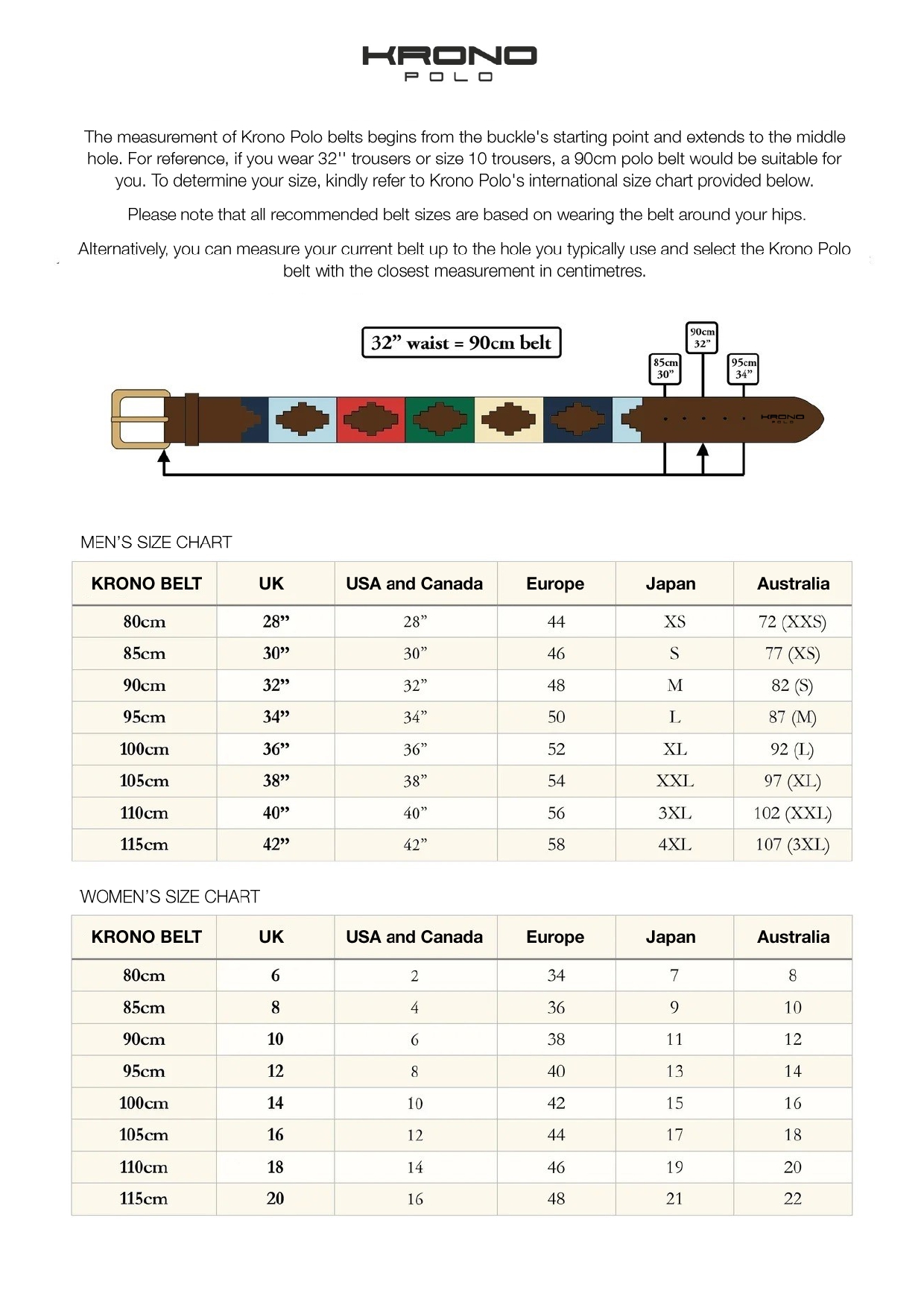Finding
Your Perfect Fit: A Guide to Calculating Your Polo Belt Size
Polo belts are not only fashionable accessories but also
functional pieces that add a touch of sophistication to any outfit. To ensure
your polo belt fits comfortably and enhances your style, it's crucial to find
the right size. In this blog, we will guide you through the process of
calculating your ideal polo belt size, whether you're shopping for a Krono Polo
belt or any other brand. Let's dive in!
- The
Method of Measuring: The most common method of determining your Equestrian lifestyle belts size is by measuring your waist or hips, depending on how you prefer
to wear your belt. Follow these steps to accurately measure yourself:
a) Grab a flexible measuring tape or a string and a ruler.
b) Decide where you want to wear your polo belt—either on your waist or hips.
c) If wearing it on your waist, locate your natural waistline, which is
typically the narrowest part of your torso, just above your belly button. d) If
wearing it on your hips, position the measuring tape around the area where your
trousers typically sit. e) Wrap the measuring tape or string snugly around your
waist or hips, ensuring it's parallel to the ground, and take note of the
measurement in inches or centimeters.
- Referring
to the Size Chart: Once you have your waist or hip measurement, it's
time to refer to the size chart provided by the polo belt manufacturer.
Brands like Krono Polo often offer detailed size charts that correlate
waist/hip measurements to specific belt sizes. Look for the column or
section that matches your measurement and find the corresponding belt
size. Keep in mind that different brands may have slight variations in
their sizing, so it's essential to consult the specific size chart for the
brand you're interested in.
- Additional
Considerations: While measuring and referring to the size chart are
the standard methods, here are a few additional considerations to ensure a
perfect fit:
a) Belt Style: Different belt styles may have
different sizing recommendations. For example, a wide belt may require a
slightly larger size compared to a thinner belt. Take note of any specific
instructions or recommendations provided by the brand regarding belt styles or
designs.
b) Existing Belt Measurement: If you already own a gaucho belt that fits you well, you can measure it from the buckle's starting point to
the hole you usually use. This measurement can serve as a reference point for
selecting the appropriate size in a new polo belt.
c) Try Before You Buy: If possible, visit a physical
store that carries the brand you're interested in and try on different belt
sizes to find your perfect fit. This hands-on approach allows you to gauge
comfort and adjustability firsthand.
Finding the right polo belt size is essential for both comfort and style. By accurately measuring your waist or hips and referring to the brand's size chart, you can confidently select the ideal size for your polo belt. Remember to consider any specific recommendations from the manufacturer and, if possible, try on different sizes before making a purchase. With a perfectly fitted polo belt, you'll elevate your look while experiencing optimum comfort and style.

